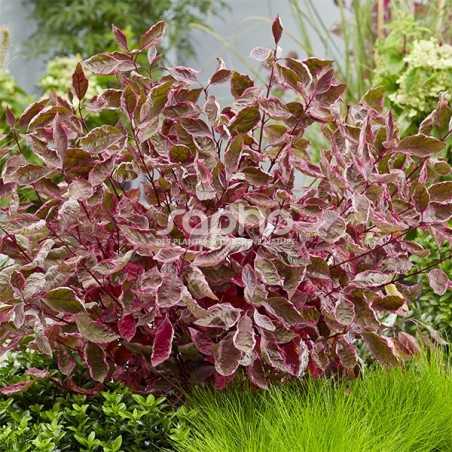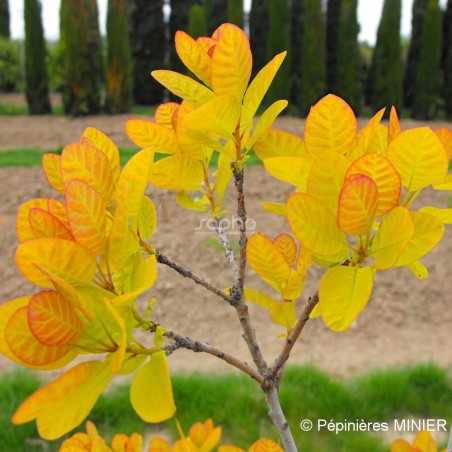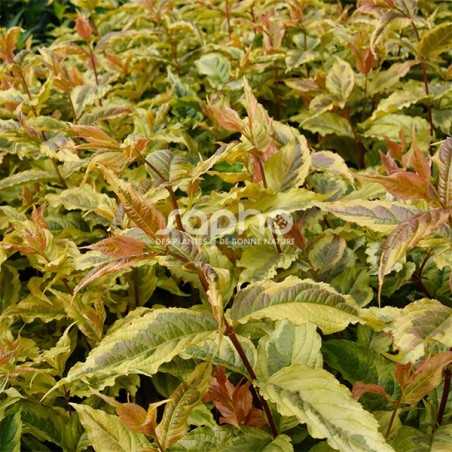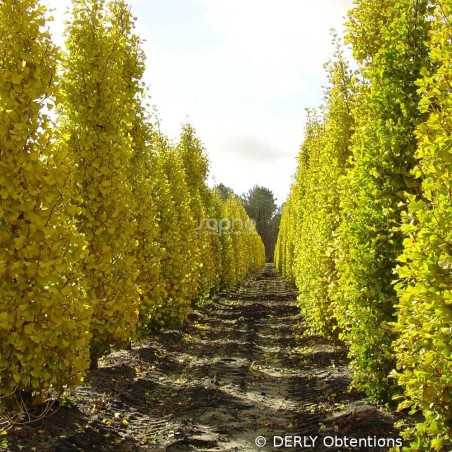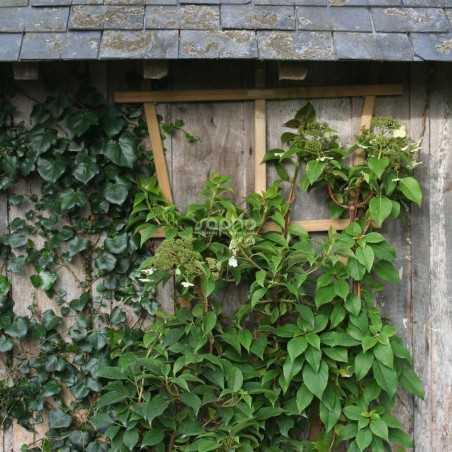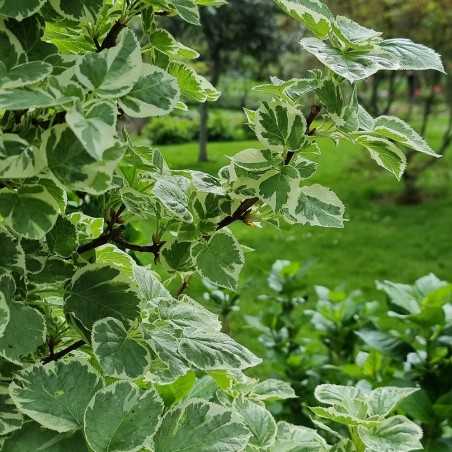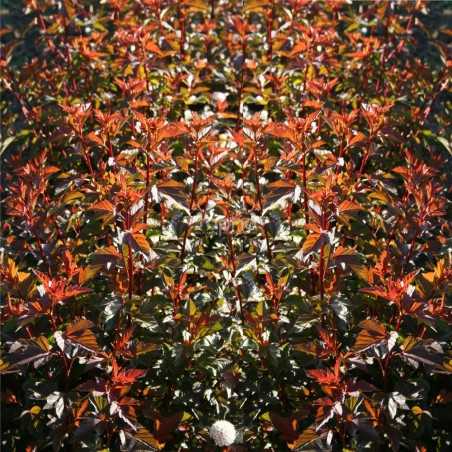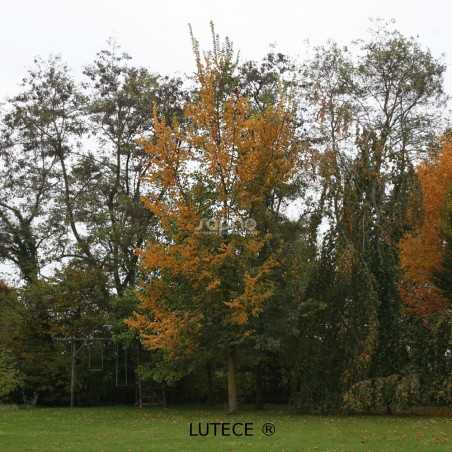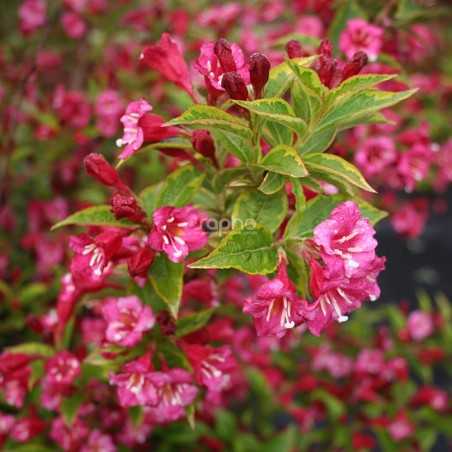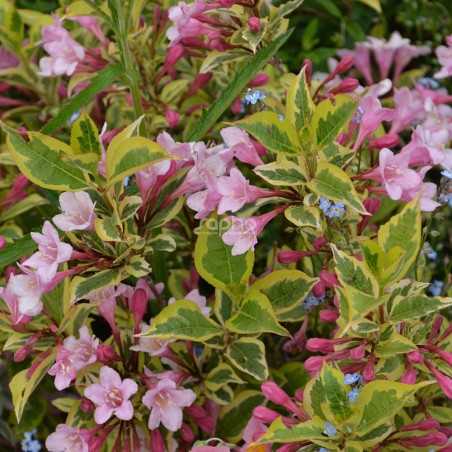A miracle of colours, all year long !
This superb variety has bright, colorful variegated foliage, which falls in autumn and reveals its highly decorative red wood in winter.
The very pink, tricolored young shoots evolve to green with creamy white and pink margins. The pink variegation returns in autumn, turning crimson to garnet-pink (even more intense in colder climates).
It's a highly branched plant, which structures very well and looks great in pots.
Filter By
Foliage
Position
Categories
Menu
Inspirations
A cultivation which will wake up beds and mixed hedgesGOLDEN LADY® 'MINCOJAU3' is a real improvement on the existing golden varieties. In spring it has beautiful young, bright orange shoots which progressively turn golden yellow. The foliage turns a yellow green in summer and is not affected by the sunlight. It becomes orange in the autumn.The cream - pink inflorescences appear in July.Being dense and branching naturally, this cultivation is easy to grow in containers.The bright and varied tints of the foliage are at their best when the shrub is grown in a bed or a mixed hedge.
Brilliant foliage, even in full sun !
This sun-hardy shrub with its variegated tricolored foliage adds a bright touch! Its silvery-green and yellow foliage, with young orange shoots, also takes on beautiful autumn colors, with stronger tricolors in September-October.
Its flowers appear in spring and are highly melliferous.
Easy to grow, it has dense growth and a compact, bushy structure. What's more, it's low-maintenance and very hardy, resistant to dryness and disease.
It is ideal for patio terraces, as a border plant or as a mass landscape planting.
The pyramide shaped maidenhair tree.
Its moderate dimensions and its pyramide shaped even growth allows this beautiful Ginkgo selection to be used in gardens, planted in rows and grown in large containers.'Blagon' is spectacular in the autumn due to its golden yellow colour. For 30 years, the original stock plant has still not told the secret of its «flowers», meaning we still don't know if it is a male of female tree.It is rustic, resistant and adapts well to urban conditions.
A climbing, semi-evergreen, vigourous hydrangea.This climbing Hydrangea comes from a crossing of H. anomala ssp petiolaris and H. seemannii. It has an evergreen to semi-evergreen foliage. It is covered in beautiful copper coloured young shoots in spring.It is hardy, its height is of over 2.50 m and more. Trained against a wall, it hangs on to its support with its air roots, without damanging it. It can also be used as ground cover.In May and June it grows large, quite flat, sterile and fertile white flowers.Trophies: Second Prize in the nursery category at the show Innovert ® 2008 ( Angers - France)Bronze Medal at PLANTARIUM 2007 (Boskoop - NETHERLANDS)
Bright with its green - grey variegated foliage, edged in white'Silver Lining' catches the eye with its dense and bright foliage. The green-grey leaf blade is nicely mixed with paler green, edged in bright white with some overflows towards the interior.In June-July it is covered in big corymbs of fertile flowers encircled with white sterile flowers.It is of medium growth and attaches itself to its support by air roots. It can be trained against a wall or planted as ground cover ; it grows well in tubs.
In springtime light, pretty copper shimmering foliage.This shrub is remarkable for its dense, deciduous jagged foliage, with its original orange copper shades in spring, turning to purple in summer and autumn. It prefers a sunny position to develop its beautiful colours.It has bushy habit, dense, stocky with strong, straight branches.Small balls of white flowers bloom from May to June. They are followed by red fruits in summer.DIABLE D'OR® suits well in mixed free hedges. Its copper shimmering in springtime, turning to purple later on makes it very precious for creating seasonal variations in the colours of the hedges foliage. The flowers and fruit add to its ornamental value.
Resistant to the Dutch elm disease, our towns and countryside have found the elm again.
Tested by INRAE, this hybrid is the result of cross fertilization of six French varieties, plus an English and a Chinese one. It is resistant to the Dutch elm disease. Its bark is smooth. The leaves are quite similar to the common elm tree: asymmetrically toothed, with a rough underside. The deep green foliage is dense. In the autumn it has a beautiful golden yellow tint. In March, before the leaves, grow discreet flowers in the shape of little red globules without petals. Its slender trunk gives LUTECE® a perfect aptitude for a high-stem training, better than Ulmus RESISTA® 'Sapporo Gold'; growing naturally its habit is regular and homogeneous. It also makes a very good shrub. It is fast growing. Perfectly adapted to landscape hedges, this cultivation is equally interesting planted in groups on an embankment for example, but also as individual tree or grown in line if it has been grown as a full standard. The name of LUTÈCE® was given to it in recognition of the help provided by Parks and Gardens Department of the city of Paris for having taken care of a field of experimentation in the Vincennes Park.
Variegated, even in sunlight.'Brigela' is the weigela with variegated green foliage, edged in creamy yellow, which keeps its qualities all summer long, even in full sun.This shrub with deciduous foliage is very vigorous, and upright. It reaches a height of 2.00 to 3.00 m and a similar spread.The dark red flowers in May - June on last year's branches are abundant.Due to its variegated foliage and its remarkable flowers, 'Brigela' is ideal in beds or open hedges, together with evergreens.
A rainbow in the garden.The "rainbow" foliage is very original: green with a wide yellow border turning dark pink during the summer. The relatively wide leaves keep their variegation throughout the growing season thus contrasting with the red wood; they do not burn in the sun.It's shape is compact and well branched, its growth average.The trumpet shaped pale pink flowers are abundant in May - June. They are sterile so don't produce any seed or fruit.This cultivation is particularly interesting from spring to autumn, thanks to its attractive foliage and its moderate dimensions are an asset for small areas.Trophies: Silver medal at Plantarium 2007 (Booskop - NETHERLANDS)

